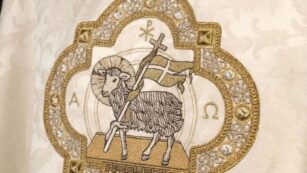
In Great Britain, placing a bet at a racetrack often involves working with a bookmaker- a person who works independently from the track and often sets their own odds for horses in any given race. In addition, these odds are often “fixed,” in that they do not fluctuate- the odds that you get when you place your bet with your chosen “bookie” are the same odds that you will get if your horse goes on to win.
However, in the United States of America, tracks generally use what is called “parimutuel betting.” Instead of bookmakers, the track itself sets morning line odds, which then fluctuate up until post time based on the amount of money placed on each horse.
What is this system? Is it beneficial? It certainly may not feel like it when your 8-1 “hot tip” gets leaked and suddenly becomes a 2-1 favorite. However, the system was born out of a desire to eliminate scandal from the sport, and while some odds at post time may not be as juicy as they once were, parimutuel betting ensures that there will, in fact, be a payout for those who win.
The History
The invention of parimutuel betting is generally credited to the Spanish bookmaker and entrepreneur Joseph Oller, who spent most of his adult life in Paris, France. Oller enjoyed observing a variety of sports that involved gambling, such as horse racing and cockfighting. He noticed that at cockfights, those who had placed bets with bookmakers or with other individuals often had to fight for their share of the winnings after the event. However, at horse races, he saw many people use a system known as the “blind pool,” where people would randomly choose a horse and all of the money that was wagered would be pooled together. After the race, the bettor with the winning ticket would collect the entire pool, after the host of the wager had deducted their predetermined commission.
Oller used this system to help create parimutuel betting, except that instead of random choice, bettors were able to use their handicapping skill to select their horse. The system began to flourish in the 1870s, although it was still technically illegal in France, and it was eventually adopted by tracks all over Europe.

In 1887, the French government began to relent and allowed the system to be implemented via “totalisers,” which involved the odds for each race being handwritten on blackboards (hence why a heavy favorite is often referred to as “chalk”). In 1890, bookmakers were banned in France, and in 1891 the parimutuel system was ensconced in legality on June 2nd, 1891.
When anti-gambling crusades began in the United States in the late 19th and early 20th centuries, racetracks scrambled to find a way to operate legally while still making enough of a profit. Nearly all states banned bookmakers by the end of the first decade of the new century, but in 1908, parimutuel wagering returned (it had been attempted at US tracks several decades prior, but while popular, it was initially deemed illegal). This was due in large part to the system being promoted by Colonel Matt Winn, who spearheaded its use at racetracks in Kentucky. With the ire of those fighting gambling focused on bookmakers, parimutuel wagering flourished, and the system continues to be used today.
Find more info here: twinspires.com/betting-guides/what-is-pari-mutuel-betting/
The Process
When you place a bet at a casino, you are typically playing against the house. In a parimutuel system, you are primarily competing against other bettors.
When you place a bet on a horse to win, your bet enters a large pool of money with everyone else who bet on that particular horse to win. If that horse does indeed win, the racetrack deducts a small percentage, and then the rest of that pool of money is paid out proportionately to you and the others who bet on that horse.
The more popular that horse was among bettors, the less profit stands to be made, because the pool will be split more ways. However, if you happen to choose a less popular horse who goes on to win, you could make a lot more money, because the pool would be split fewer ways and you would get a larger portion.
Most of the time, the horse that receives the most bets is one that people think is most likely to win. This makes sense, because most people generally wager with the hopes of making some sort of profit.
However, horses who are popular for other reasons, such as a distinctive color, funny name, or who are owned by microshare groups (who often carry sentimental wagers from their 1000+ “owners”) are heavily bet as well. Those who collect the most winnings are often the bettors who are able to take sentiment out of the equation.

One of the key factors to remember when betting using a parimutuel system is that the odds can and do change. Racetracks use oddsmakers to set baseline odds for each horse, referred to as “morning line odds.” These odds, however, change the moment the betting windows open and horseplayers begin to actually put money on horses. For this reason, in a parimutuel betting system a successful bettor not only knows the horses in the race, but knows the betting patterns of their fellow gamblers.












